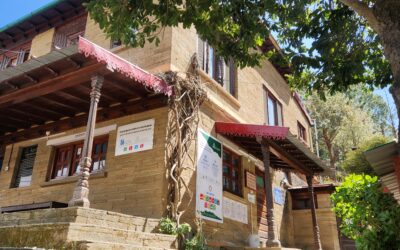Katkaris working at brick kilns
As part of my assignment I’ve been working for scoping and initiating new livelihoods for the Katkari tribal community in Raigad under the aegis of my organization – Centre For Social Action, Mumbai. I joined CSA in August this year and moved to Mangaon, Raigad to live and work under the supervision of Father Richard Quadros of SVD, Mangaon. For the past three months (August-October), I have been travelling throughout Raigad, visiting the many tribal hamlets where our partner organizations work. The purpose of these visits was to get a first-hand account of the ground realities and assess the possibilities of feasible livelihood solutions.
The Katkaris are one of the most marginalized communities of India, being designated as ‘Particularly Vulnerable Tribal Groups (PVTGs)’ within the Scheduled Tribes. Spread in pockets in Gujarat and Maharashtra, a substantial population (approx. 1,10,000) is spread across all of Raigad district. Their hamlets called ‘Adiwasiwadi’ are placed at the foothills, and in some cases even at the hilly slopes. Katkaris dwelled in the forests and lived off it and didn’t own land unlike other communities. With a lot of empowerment and rights-based interventions based around the Forest Rights Act, 2006 by our partners, they have been given some patches of land by the authorities.
Traditionally, they have been rice cultivators and continue to do so in their small patches of lands, or in land leased from others. Post the agricultural season, commencing right after Diwali, able-bodied Katkaris would migrate to work as daily wage labourers in brick kilns or construction sites, only to return back at Holi (March). The few that are left along with the elders indulge in vegetable cultivation or collecting forest products like wood, cashew, herbs, fruits etc. This annual ritual of migration is more pronounced in the talukas of south Raigad for example, Mahad, Mhasla etc. compared to the talukas like Panvel, Karjat, Alibag etc. in north Raigad, and that’s also due to water scarcity in that region during the summers.
Apart from migrating for seeking livelihood opportunities in the agricultural off-season, many a times it is also to earn money to pay off loans, which in turn are lend by brick-kiln owners or contractors. Also, a considerable number of loans are taken to spend during festivities like Ganpati/Diwali, or for occasions like marriages, or in the Jatra (village fair) and very less for agricultural/medical reasons.
The Katkaris who have been living hand to mouth since days of yore have poor financial literacy. There is no culture of savings and they work expecting to be paid at the end of the day. The latter along with their vagabond lifestyle has been a considerable factor in why they receive no employment in the local industries and factories in Raigad. Also, the lack of financial literacy leads to them being duped by traders and merchants when they are selling their crops or products esp. forest-based products like cashew etc. There are also many other post-production challenges with respect to marketing and sales. The Katkaris lack a fixed space/outlet for hawking/selling their products and often face harassment from other hawkers or the policemen in the market, roadside or railway stations where they sit and vend their goods from their Toplas (basket). Interestingly, I also observed a lack of fair price justice in the buyers of these goods who’d often haggle and quote low prices, seemingly firm in their minds of what their seller deserved.
Education is another challenge and migration is one of the main reasons for the same. Every year when the tribal families migrate, the education of their children gets affected as they drop out. They grow up uneducated and end up with the same vocations as their forefathers and this has turned into a vicious cycle over years. Apart from migration, child-marriage is also one of the chief reasons for lack of education. It is not uncommon to see children esp. girls dropping out of school after getting married in their teenage years.
While families are tightly knitted, there is a lack of trust and affinity to come together in a group for any endeavour. This has been one of the most important drawbacks of the community to progress and also one of the hindrances for many of the livelihood interventions of our partners.
One of the important observations in these village visits was the presence and popularity of multimedia in the community. I found out most of the houses having a TV. They also have penchant for gadgets like smartphones. They consume a lot of visual media and it is not uncommon to see the influence of popular culture on them esp. when you see the younglings sporting hairstyles like their favourite cricketer or actor. All this goes on to show that while there is reluctance in them to change from their tribal lifestyle, they are prone to change given a pervasive medium. Multimedia can become one of the tools to raise awareness and dispense information to empower them to know about their rights and duties to be able to safeguard their interests and progress as a community.
References
Tribal Identity and Minority Status: The Katkari Nomads in Transition By Rudolf C. Heredia, Rahul Srivastava
http://rajbhavan-maharashtra.gov.in/rajbhavan/pdf/2_Report.pdf
Feature Image Credits: Creative Commons




i am a student of tata institute of social science , as part of my course i lived in neelaj village,in mangao area, for 15 days with katkaari tribe.. i lived with the people , met sarpanch, gram sevak, ANM. asha workers, the experience was once in a life time.
They dont have money to pay for channels , i have seen them watching free modi channel all day, and also they watched tele shopping ads.
The community has HIV, there are so mny cases of child marriage and polygamy , that it will scare you. i even attended a child marriage feast. can u believe it. !